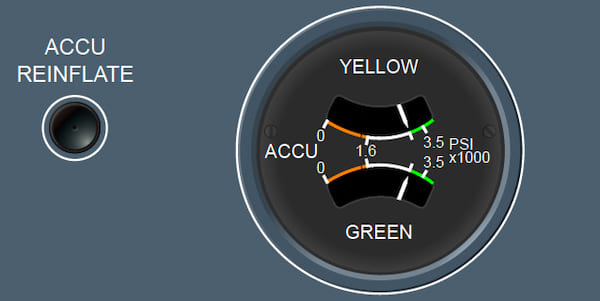The flight crew uses the steering handwheels to steer the aircraft during taxi. Each steering handwheel controls the NWS angle up to _____ left or right.
The aircraft has carbon brakes. Each Main Landing Gear (MLG) wheel has:
During the approach, _______ the braking system tests all the braking modes in sequence. This is the braking Pre-Land Test (PLT).
The Brake To Vacate (BTV) mode targets a ground speed equal to _____ before the exit that the flight crew selected.
The Landing Gear Extension Retraction System (LGERS) is pressurized at all time.
The LGERS is pressurized only during the extension and the retraction phases. At all other flight phases, the LGERS is isolated from hydraulic pressure by closing the isolation valves
On the A350-900, the maximum NWS (Nose Wheel Steering) angle is 72 degrees left or right via the steering handwheels and _____
The A-SKID disconnection with the A-SKID sw in the cockpit is permitted only in the case of 'LOSS OF BRAKING' procedure.
Use of parking brake while aircraft is moving is prohibited unless in emergency.
Refer to FCOM Limitations chapter
A-SKID PRINCIPLE - When the speed of a wheel decreases below the individual target speed, a brake release order is generated and combined with the braking orders of the flight crew or of the autobrake to maintain this target speed.
The A-SKID uses data from the ADIRS and the tachometers to calculate an individual target speed for each wheel. Each individual target speed ensures maximum braking performance in the current runway conditions, and changes as runway conditions change.
The Backup Steering Function (BSF) must not be used:
Advertisement
GRAVITY EXTENSION SEQUENCE - When the flight crew selects the L/G GRVTY selector to down, the alternate extension sequence is as follows:
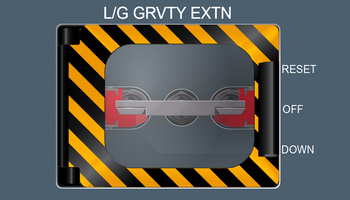
The amber range is from 0 to 1 800 PSI, and corresponds to the range at which:
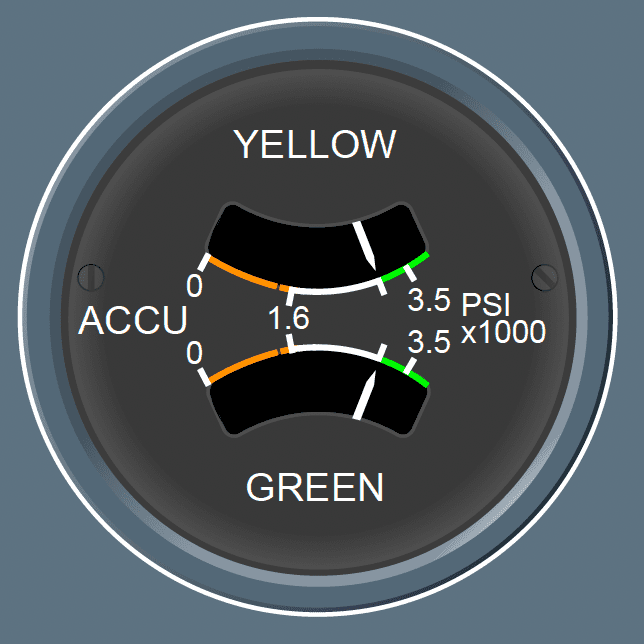
When one engine is running, the brake accumulators are automatically pressurized.
In order to have adequate directional control in the case of a rudder pedal fault or jammed rudder pedals, differential braking controls the rudder and nosewheel steering.
All wheels have fuse plugs that prevent the wheel and tire from bursting. In the case of a brake overheat, the fuses melt and the tire deflates.
Only MLG wheels have fuse plugs that prevent the wheel and tire from bursting. In the case of a brake overheat, the fuses melt and the tire deflates.
BACKUP STEERING FUNCTION - The PRIMs and the STEER CTL convert steering control inputs into differential braking orders applied on the MLG wheels powered by the YELLOW hydraulic system.
The NLG bay is fitted with only two doors that are mechanically linked to the NLG.
The NLG bay is fitted with four doors: two rear doors that are mechanically linked to the NLG and two front doors, each operated by a single hydraulic actuator. In normal operation, when the NLG is extended, the rear doors are open, and the front doors are closed.
As long as both L/G CTL systems detect the compression of any gear, an interlock mechanism (baulk) locks the landing gear lever in the DOWN position to prevent the retraction of the landing gear.
The GREEN hydraulic system powers:
There are two Remote Braking Control Units (RBCUs). Each RBCU controls its dedicated wheel group, and can provide alternate and EMER braking control to the other group in the case of braking mode reconfiguration. They are powered by the GREEN hydraulic system.
RBCU 1 controls the MLG wheels powered by the GREEN hydraulic system. RBCU 2 controls the MLG wheels powered by the YELLOW hydraulic system.
Advertisement
If the A-SKID is selected to OFF:
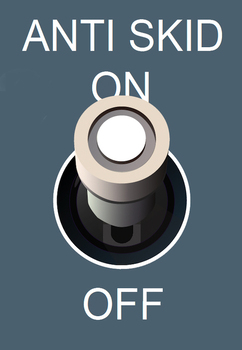
The Brakes Control System (BRAKES CTL) controls the normal, and the alternate braking modes. The system has two redundant modules, referred to as Brakes Control System 1 (BRAKES CTL 1) and BRAKES CTL 2. The two systems are always active.
One BRAKES CTL is active when the other one is a backup.
On ground, if the flight crew presses one time the A/THR instinctive disconnect pb, the autobrake disconnects. Immediately after, if the flight crew presses a second time the A/THR instinctive disconnect pb:
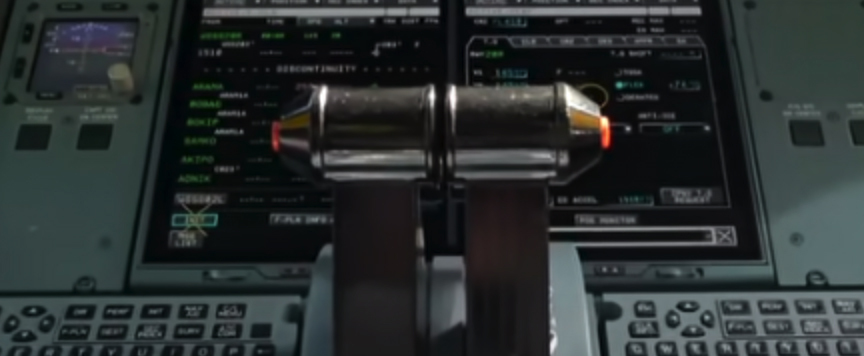
The red arrow comes on and flashes when:
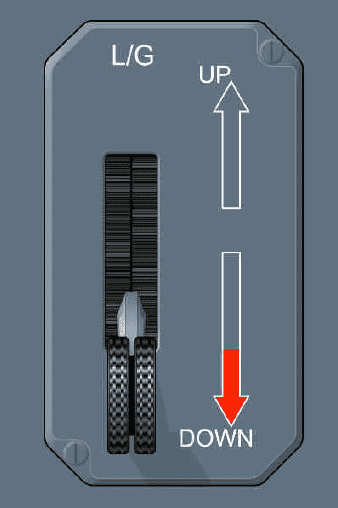
The Heading Control Function (HCF) is inhibited at:
The HCF can order a maximum of +/- 3 degrees of nosewheel steering. If the HCF is inoperative or disconnected via the PEDAL DISC pb, the pilot has to compensate for the offset with the steering handwheel.
GRAVITY EXTENSION SEQUENCE - The landing gear position indications remain available during a gravity extension from the NLG and MLG proximity sensors.
DEACTIVATION OF THE BASIC AUTOBRAKE MODE - Once engaged, the basic autobrake mode deactivates/disengages and reverts to disarmed state if one of the following occurs:
The autobrake RTO mode activates when:
DEACTIVATION OF THE BASIC AUTOBRAKE MODE - Once engaged, the basic autobrake mode deactivates/disengages and reverts to armed state if the ground spoilers are retracted and either the ground speed is _____, or at least one thrust lever is at or above MCT.
Green and yellow brake accumulators are installed in different positions in the aircraft. As a consequence, depending on the temperature, a difference can be noticed between the pressure of the green and yellow brake accumulators.
Advertisement
The brake pedals have a Brake Pedal Transmitter Unit (BPTU) that converts the position of the pedals into an hydraulical signal.
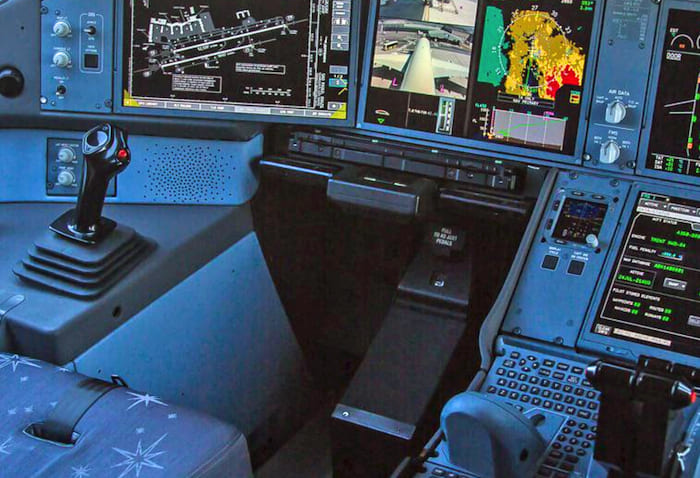
The brake pedals have a Brake Pedal Transmitter Unit (BPTU) that converts the position of the pedals into an electrical signal.
The landing gear gravity extension reset function can be used in flight but only for special conditions.
The landing gear gravity extension reset function must not be used in flight. The landing gear gravity extension must be reset only on ground by maintenance personnel (refer to FCOM Limitations chapter).
The dual gauge indicates the pressure applied to the left and right brakes of the main landing gear. The pressure range is displayed on a non-linear scale from 0 to the maximum braking pressure of:
L/G GRVTY EXTN PANEL - What is the true statement?
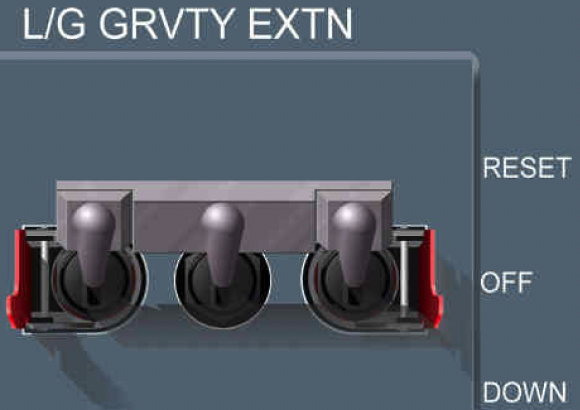
The Heading Control Function (HCF) aims to mitigate aircraft veering during taxi (at speed _____), by maintaining the aircraft in straight line when the flight crew releases the steering handwheel. The HCF compensates for the external perturbations (NWS offset, crosswind, taxiway slope).
ARMING OF THE BASIC AUTOBRAKE MODE - The basic autobrake mode arms when:
On the A350-900, the maximum NWS angle is 6 degrees left or right, via the rudder pedals and _____
The maximum NWS angle is more limited with the use of rudder pedals. The maximum NWS angle is 6 degrees left or right, via the rudder pedals below 100 kt and is reduced above 100 kt. It is 75 degrees left or right via the steering handwheels below 30 kt and is reduced above 30 kt.
The ECAM to generate the BRAKES BRAKES HOT alert, when a brake temperature exceeds _____, and to the WHEEL SD page
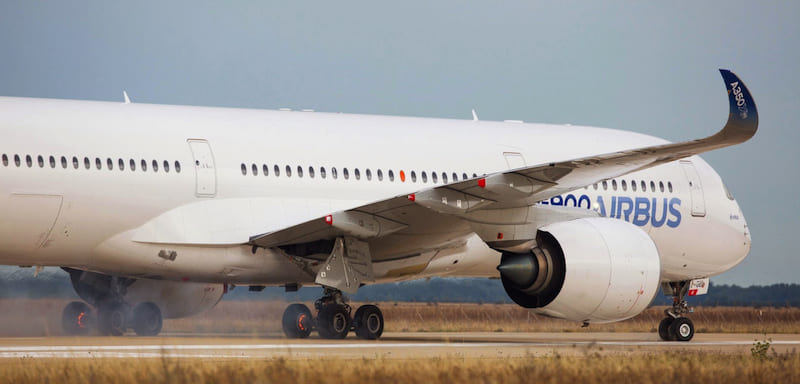 S.Ramadier
S.Ramadier
The purpose of the braking PLT (BRAKING PRE-LAND TEST) is to:
What is the indication to the flight crew when the BSF is active or inhibited?
Advertisement
The YELLOW hydraulic system powers:
BACKUP STEERING FUNCTION - The maximum NWS angle remains the same as in normal operation with the nose wheel steering system operative.
There are _____ braking modes:
The braking system is not designed to hold the aircraft in a stationary position when a high thrust level is applied on at least one engine. During ground procedures that require a thrust increase with braking, the flight crew must ensure that the aircraft remains stationary.
Refer to FCOM Limitations chapter.
The standby STEER CTL side becomes active ______.
A-SKID is not available at low speed (below 40 kt).
The A-SKID is not available at low speed (below 10 kt) but also in alternate braking mode, if the accumulator pressure is less than 1 800 PSI (124 bar), in emergency braking mode and in ultimate braking mode (parking brake)
BACKUP STEERING FUNCTION - The Backup Steering Function (BSF) permits the flight crew to steer the aircraft when:
When the Backup Steering Function (BSF) activates, the flight crew shall not use manual differential braking or differential thrust to steer the aircraft unless required for controllability at the end of the rollout.
If both steering handwheels are used simultaneously, the steering commands are not algebraically added. This is the only exception in the aircraft architecture.
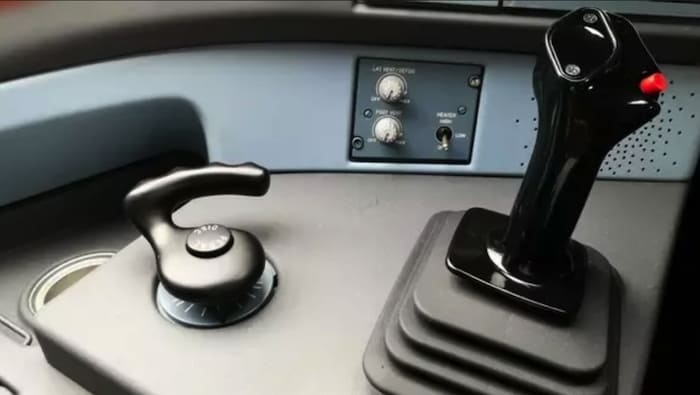
If both steering handwheels are used simultaneously, the steering commands are algebraically added.
NWS HYDRAULIC POWER SUPPLY - The _____ when at least one engine is running.
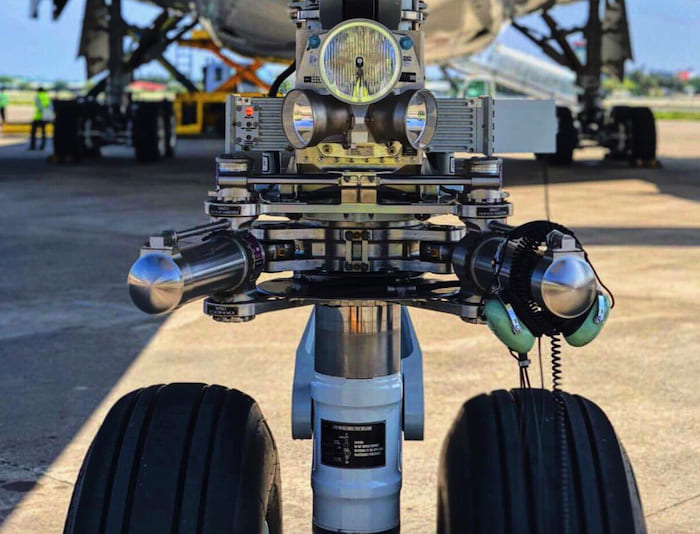
Advertisement
The Backup Steering Function (BSF) permits the flight crew to steer the aircraft when the Nose Wheel Steering (NWS) is failed and the nose wheel is free to swivel, or when the yellow hydraulic circuit is lost. The BSF permits to vacate the runway using the normal steering controls (i.e. steering handwheels and rudder pedals). The maximum NWS angle:
The NWS is not available when the engines are shut down.

ACCU REINFLATE PB - When pressed, the brake accumulators reinflate via:
